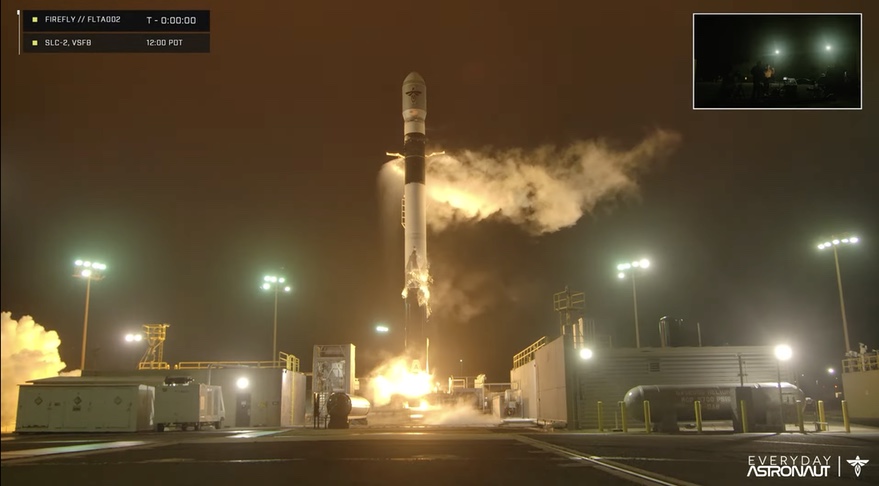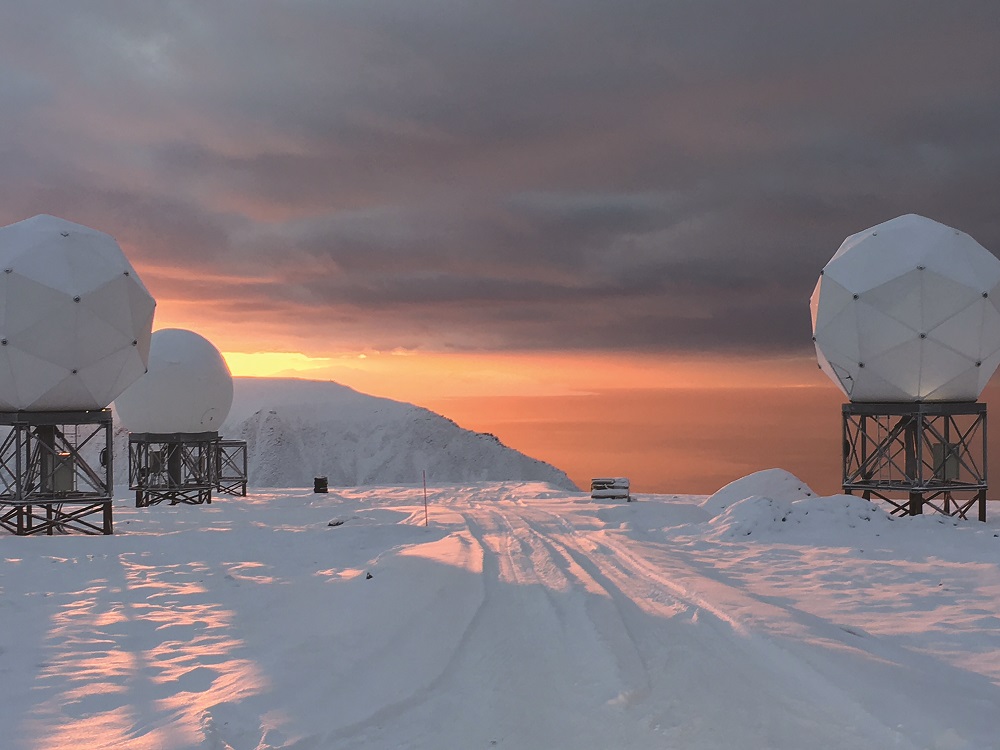Firefly says Alpha launch a success despite payload reentries
Original Publication Date: 2022-10-10 11:26

Firefly Aerospace's Alpha rocket lifted off Oct. 1 from Vandenberg Space Force Base in California on the second flight of the vehicle. The launch carried three satellite payloads: a 3U educational cubesat called Teachers in Space (TIS)-Serenity, TechEdSat-15 and PicoBus. The satellites, though, appeared to be in lower orbits than originally planned.
U.S. Arctic strategy calls for investment in climate monitoring, communications technologies
Original Publication Date: 2022-10-09 15:41

The White House on Oct. 7 released 'The National Strategy for the Arctic Region' The plan recommends investments in infrastructure to monitor the region. Russia has invested significantly in its military presence in the Arctic over the last decade. China is seeking to increase its influence in the Arctic through economic, diplomatic, scientific, and military activities.
NASASpaceFlight.com
The SSLV or Small Satellite Launch Vehicle conducted its launch debut from Sriharikota, India on Sunday, August 7. An issue with the fourth stage resulted in the satellites being deployed in an unusable orbit. The SSLV program’s genesis was a December 2015 National Institute of Advanced Studies proposal to create a “Small Satellite Launch Vehicle-1”
International Archives
China launched the Advanced Space-borne Solar Observatory (ASO-S) on Chang Zheng 2D. The launch took place on Oct. 8, at 23:43 UTC, and was confirmed a success. It will operate in a 720 km Sun-synchronous orbit and will observe the Sun 24 hours a day.
Chinese Long March 3B Launches APStar-6C Communications Satellite – Spaceflight101

China conducted a rare commercial launch of a Long March 3B rocket with the APStar-6C communications satellite for APT Satellite Holdings. Long March 3B lifted off from the Xichang Satellite Launch Center at 16:06 UTC on a mission of under half an hour to lift the spacecraft into an elliptical Geostationary Transfer Orbit. Confirmation of launch success was provided by APT Satellite around 40 minutes after liftoff.
Blue Origin’s New Shepard Reaches new Heights in latest Test Flight – Spaceflight101

Blue Origin's reusable New Shepard launch system reached new heights in a test designed to expand the vehicle’s operational envelope by sending it to a peak altitude of 107 Kilometers. Sunday’s flight marked the second for this particular set of hardware, following up on the successful December 2017 mission that debuted “Crew Capsule 2.0”
ISS Updates – Spaceflight101 – International Space Station

A veteran NASA spacewalker and an EVA rookie from Japan ended their week with nearly six hours of work outside the International Space Station. The restoration of the Station’s Mobile Servicing System started last year and continued in January to provide Canadarm2 with a new pair of grappling hands.
Featured – Spaceflight101

A SpaceX Falcon 9 took to the skies over Florida’s Cape Canaveral Monday afternoon. It was lifting a flight-proven Dragon spacecraft into orbit for a critical delivery of science gear, supplies and maintenance hardware. It was the first of at least six cargo ships inbound to the U.S. Segment of ISS this year.
News – Spaceflight101

Russia's Rockot booster is set to blast off from the Plesetsk Cosmodrome at 17:57 UTC with the Sentinel-3B multi-function satellite. The launch will be followed by the launch of a Russian Rockot booster for the Copernicus satellite fleet.
Re-Entry: Long March 11 Rocket Body – Spaceflight101

The CZ-11 fourth stage used leftover propellant for a partial de-orbit maneuver, lowering its perigee to 120 Kilometers to significantly accelerate its orbital decay. It is reportedly built around a YF-50 main engine and conducts the orbital circularization after the three CZ-11 stages finish their job.
Documentary Series: JPL and the Space Age

JPL and the Space Age uses rare archival footage and interviews with many of JPL’s pioneering engineers and scientists. Each episode of JPL and the Space age was written, produced and directed by JPL Fellow and national Emmy Award-winning documentarian Blaine Baggett.
Caltech/JPL Privacy Policies and Important Notices

Caltech/JPL's policies on privacy, security, accessibility, linking and copyright. Information you provide on a Caltech/JPL Web site will be used only for its intended purpose. We will only share your information with a government agency if it relates to that agency, or as otherwise required by law.
My Favorite Martian Image: ‘Enchanted’ Rocks at Jezero Crater

The rocks of the crater floor are igneous in origin, having formed billions of years ago from molten rock. Over time, mud, silt, and sand brought into the lake that filled Jezero compressed and solidified into thin layers of sedimentary rock. If microscopic organisms were also present during sedimentary rock formation, they could have been captured within the layers.
NASA’s InSight Waits Out Dust Storm

InSight saw a recent drop in power generated by its solar panels as a continent-size dust storm swirls over Mars’ southern hemisphere. With less sunlight reaching the lander’s panels, its energy fell from 425 watt-hours per Martian day, or sol, to just 275 watt-hours per sol. To conserve energy, the mission will turn off InSight’s seismometer for the next two weeks.
JPL Developing More Tools to Help Search for Life in Deep Space

OWLS has been funded by JPL Next, a technology accelerator program run by the Lab’s Office of Space Technology. In June, the project team tested its equipment – currently the size of a few filing cabinets – on the salty waters of Mono Lake in California’s Eastern Sierra. OWLS found chemical and cellular evidence of life, using its built-in software to identify that evidence without human intervention.
Citizen Scientists Enhance New Europa Images From NASA’s Juno

Citizen scientists have provided unique perspectives of the recent close flyby of Jupiter’s icy moon Europa. By processing raw images from JunoCam, the spacecraft’s public-engagement camera, members of the general public have created deep-space portraits of the Jovian moon.
NASA Study Finds Climate Extremes Affect Landslides in Surprising Ways

California hosts more than 650 slow-moving landslides. Scientists looked at how those landslides behaved from 2015 to 2020, a period with broad swings in precipitation. They didn't expect to find that both already waterlogged landslides and their drier counterparts sped up and moved farther downhill during wet periods compared to drier times.
